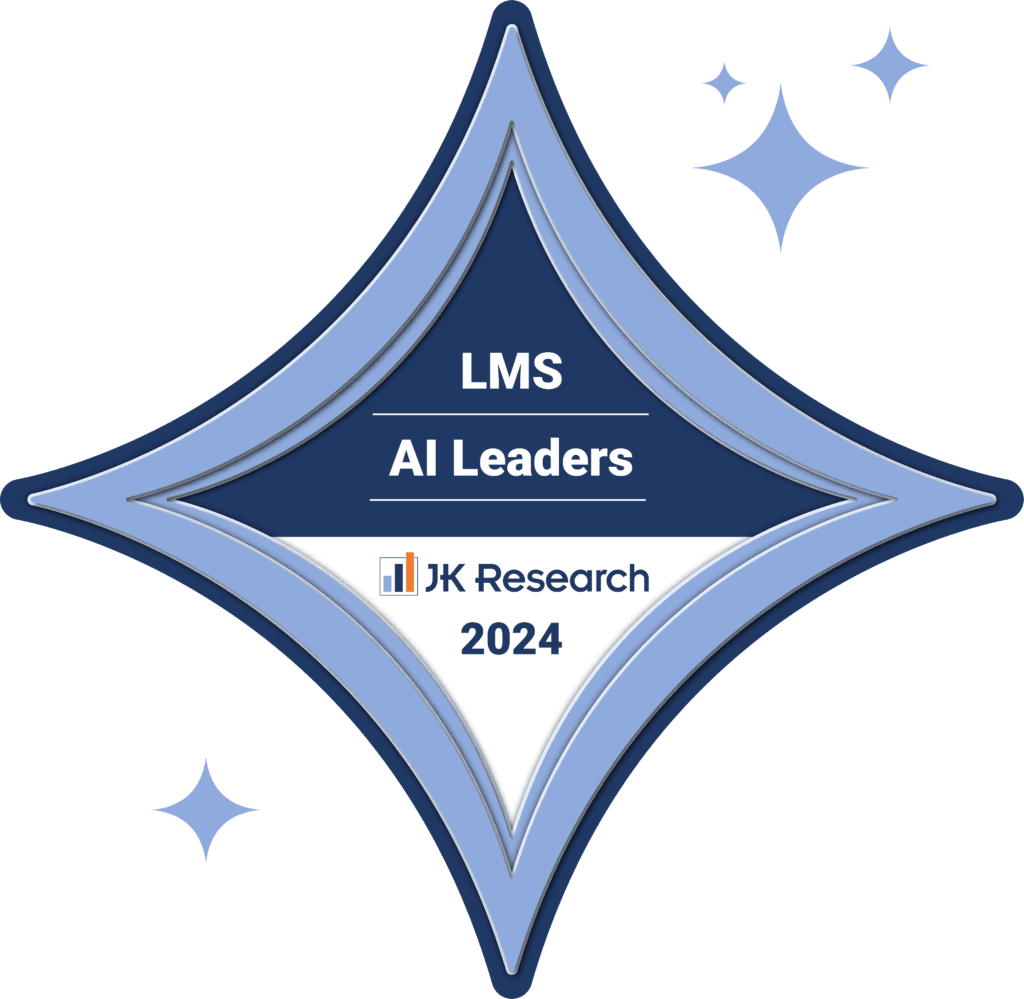What does digital transformation really mean for learning and development? 🤔
Now, there’s one to ponder!
To us, it’s about more than just swapping out traditional training methods for digital ones. 💻
It’s about reimagining how your organisation leverages technology to create a learning environment that’s efficient, engaging, and future-proof. 🚀
From AI-driven learning paths to virtual classrooms, digital transformation equips your workforce with the tools they need to not just survive but thrive both now and in the years to come. 💡
But how do you make sure that your organisation gets it right?
We have an idea or two!
Let’s explore the five key pillars that will guide your journey toward a successful digital learning transformation. 🛤️
But first…
What is Digital Transformation?
Let’s start with the basics.
Digital transformation is more than just a buzzword; it’s about rethinking how your organisation uses technology to radically improve performance, processes, and learning outcomes. 🚀
In L&D, this means shifting from traditional training methods to digital solutions that are more engaging, efficient, and scalable.💡
Think online courses, virtual classrooms, AI-driven learning paths, and more.📚
It’s about using the power of digital tools to create a learning environment that not only meets the needs of today’s workforce but also anticipates the demands of tomorrow. 🌟
According to LinkedIn’s 2023 Workplace Learning Report, 79% of L&D professionals expect their budget for digital learning to increase or stay the same, reflecting the growing emphasis on digital transformation.
Why is Digital Transformation Important for L&D?
Your employees need to continuously upskill and reskill to keep pace with evolving industry trends.
This is where digital transformation comes into play. 🚀
By embracing digital learning, L&D teams can provide more personalised, flexible, and accessible training options. 🎓
It’s not just about keeping up; it’s about leading the charge.⚡
Digital transformation allows organisations to stay competitive, attract top talent, and ensure their workforce is always equipped with the latest skills. 🌍
Gartner predicts that by 2025, 75% of organisations will use AI-based solutions for learning and development, underlining the importance of digital tools in the future of L&D.
5 Key Pillars to Implementing a Successful Digital Learning Transformation
Introducing the Visions Vowels: Your Roadmap to Digital Learning Transformation
When it comes to a successful digital learning transformation, the ‘Vision Vowels’ are not just a concept but your roadmap.
These five key pillars, as outlined by our Founder, Fred, provide a clear, actionable framework for driving digital learning transformation.
The Vision Vowels provide a clear, actionable framework for driving digital learning transformation.
Here’s what the Vision Vowels stand for…
Analyse
This is where it all starts. Understanding the needs of your organisation and its people is crucial. 🔍
Ask yourself:
What roles do we have?
What skills are essential?
Where are the gaps?
Establish clear objectives for your digital learning initiative—whether it’s cutting costs, enhancing flexibility, boosting upskilling, or improving retention. 🎯
Define what success looks like and how you’ll measure it, whether through completion rates, performance boosts, cost savings, or reduced attrition. 📈
Engage
Once you’ve analysed where you are, it’s time to get everyone on board.
Engage key stakeholders and leadership by communicating the benefits in a language they understand. For example, if you’re focusing on staff retention, translate this into cost savings on recruitment. 💼
Keep everyone in the loop, address concerns promptly, and identify “change champions” to support the transformation. 🏆
Don’t forget to consult with Learning Technology vendors to find the right fit for your needs—there’s no one-size-fits-all solution. 🤝
Implement
Now comes the execution phase.
Based on your Training Needs Analysis, create and curate digital content that aligns with your goals. Convert existing materials into digital formats and supplement them with high-quality external content. 💻
Focus on interactive, bite-sized learning modules and include assessments to reinforce learning. 📚
Start with a pilot program—roll out a subset of content to a select group, gather feedback, and be ready to make adjustments. 🚀
Once everything is fine-tuned, launch the platform organisation-wide, ensuring comprehensive training and ongoing support. 🌐
Optimise
Remember, your work isn’t done once the platform is live.
The ‘Optimise’ pillar is an ongoing process.
Continuously track and monitor everything—from content engagement and completion rates to employee satisfaction and retention. 📊
Compare these metrics against the KPIs you set during the Analyse stage, and adjust your content accordingly. 🔄
Keep an eye on industry trends and evolving skill requirements to ensure your training stays relevant. 🌟
Regularly report back to stakeholders, using language tailored to your audience—especially if you’re presenting to the C-Suite, who care most about cost savings and revenue growth. 💼📈
Unite
Finally, bring it all together by fostering a culture of continuous learning.
This is not just a task but a responsibility for organisational leaders. 🌱
Integrate learning into daily workflows, encourage management to support professional development, and recognise achievements. 🎉
Use gamification and rewards to keep learners engaged and motivated. 🎮
By reinforcing new skills through real-world applications, you’ll help solidify your team’s capabilities and ensure long-term success. 🚀
To Summarise if TLDR…
Digital transformation in Learning & Development is more than just a trend—it’s necessary to stay competitive. 🌟
A study by Deloitte found that companies with high digital learning maturity are twice as likely to report strong employee engagement compared to their less mature counterparts. 📈
By following the five key pillars we’ve introduced you to—Analyse, Engage, Implement, Optimise, and Unite—you can ensure a successful digital learning transformation that not only meets but exceeds your organisation’s goals. 🚀
Are you ready to transform your learning and development? 🔄
Time to make it happen! 🎯
Got 2 minutes?
If your organisation is struggling with disengaged learners, Thirst has the solution. 🔥
Thirst is an AI-powered learning platform that helps L&D teams of all sizes boost learner engagement and create experiences tailored to today’s learners.
Take a guided tour today and see Thirst in action.
For more e-learning insights, resources and information, discover the Thirst blog.
You may also enjoy:
12 Onboarding Best Practices for New Employees | How to Make Your Learning as Addictive as Social Media? | Top Ten Diversity Challenges in the Workplace







